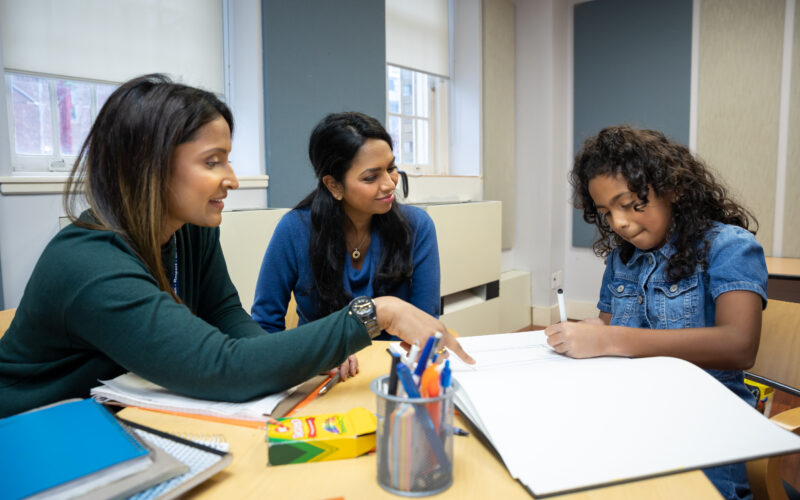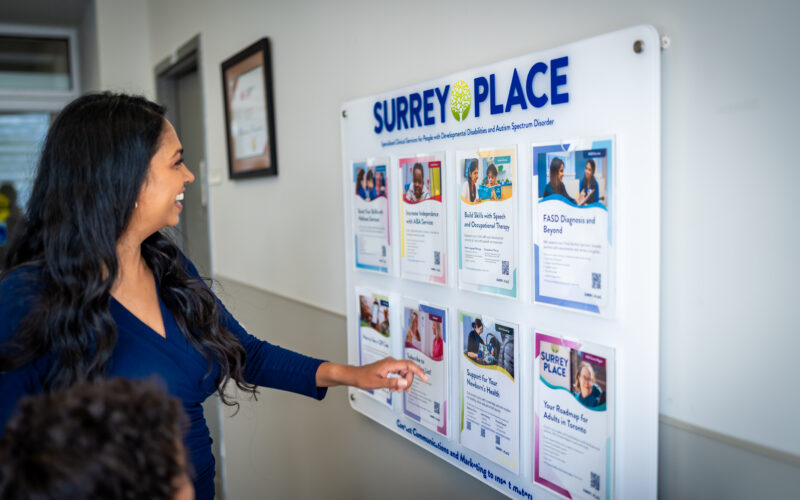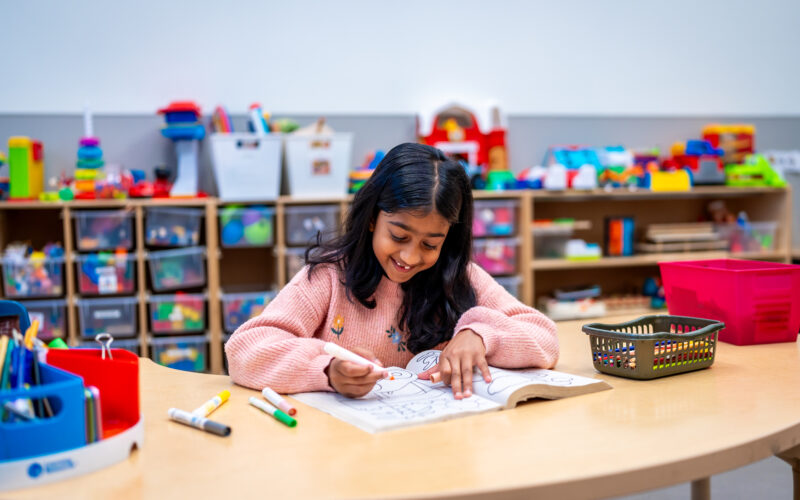ABA Group Therapy consists of a suite of services that offers children a structured, engaging place to learn important life skills. There are many benefits to choosing ABA Group Therapy, including the opportunity for your child to interact with peers, gain confidence in group settings, in a really fun learning environment!
Reaching milestones with ABA Group Therapy
Your child is unique and our ABA groups are designed with that in mind. We have a variety of different groups where children can focus on learning certain goals and skills. Through ABA Group Therapy, children can reach important milestones like:
- Learning to express themselves better
- Developing increased interest in playing with others
- Recognizing their emotions and how to manage them more effectively
How do I know which ABA group is the right fit for my child
As our ABA Group Therapy is designed to meet the unique needs of a child as they grow and develop, it often works like a “step-system”—a series of developmental “steps” designed to support children and families through stages of growth. Based on strengths and skills, you can assess where your child would best fit within the step-system and which specialized ABA services would be most beneficial.
“Finding the right support is about understanding the right fit for your child.” – Dr. Nancy Freeman
Dr. Nancy Freeman, Psychologist and Director of Core Autism Services, has been working with children with autism for over 35 years. She explains, “Children with more advanced skills may master their goals more quickly and move from one step to the next. Some who are earlier in their learning journey can be expected to benefit from continuing in a service for more than one session. It’s very common. It’s all about what your child needs at their stage of development.”
The ABA step-system, explained
The step-system is a handy guide to help your family understand where your child’s skills are now and where they might go next. It is meant to support individualized progress and skill development in essential areas like communication, social skills, and emotional regulation.
The step-system consists of five steps, with each step building on the previous one to develop foundational and advanced skills. Each of our ABA groups are categorized under a step to help you find and identify a service that best aligns with your child’s skill level and your goals for your child. From groups in Step 1, made to support early learners, to groups in Step 5, made to support more advanced learners, there is something for everyone!
Learn more about what ABA groups are currently available here.
Finding your place in the ABA step-system
Just as every child is unique, so is each family’s journey. Whether you are just starting out, somewhere in the middle, or straddling multiple steps, you can use the step-system to figure out your place. Here are some tips to help guide you:
- Match your child’s skills: compare your child’s communication and social skill level to the criteria of each step.
- Check the group goals: Explore the goals for each ABA group and how they might match your family’s goals for your child.
- Notice progress: If your child has completed a group before, consider if they’d benefit from the opportunity to practice those skills more in a structured learning environment, or if they’re showing new skills at home or in other settings. This might mean they are ready to move to the next step.
- Connect with Surrey Place staff to help you! Join a Discover Your ABA Journey session, come by one of our in-person intake drop-in sessions or a SmartStart Hub for guidance and support.
“Progress isn’t always a straight line, and that’s okay—every child’s developmental journey is unique!” – Dr. Nancy Freeman
Where would Alex fit?
Let’s take for example, Alex.
Alex is 8 years old. He loves animals, especially turtles. He can understand simple questions and expresses basic needs and wants. He can initiate short conversations and often uses simple 2 to 3-word sentences. A goal for him would be to learn how to interact and share with his peers. Given Alex’s strengths and skill level, he would be at a Step 3, and a group like “Social Stars” would be great to help build social skills like sharing and parallel play.
Does everyone need to start at step one?
Absolutely not! If you’re unsure, we recommend you book a Discover Your ABA Journey session to work with a clinician to identify which program will help your child thrive! If you’re new to Surrey Place, but you evaluate your child at a certain step (ex., step five), you are welcome to register them for groups in that step without attending any of the earlier steps.
What if my child fits between two steps?
We know your child’s skills and strengths might not always fall under one step. Your child might have skills in different areas and can hover between steps as they grow, learn and develop.
In these cases, you will want to look at the recommendations made by your child’s most recent clinician. You may wish to repeat the current group to consolidate your child’s skills further, as goals can be adjusted to a better fit for your child.
For children new to our services, you are more welcome to attend a Discover Your ABA Journey for guidance. You may also want to consider 1:1 FBI to work on goals not covered by the group curriculum.
How to know when my child is ready to move on or not?
Every child has their own mix of strengths, skills and areas where they need more development or support. That’s what makes every individual unique and special! Once enrolled in an ABA program, in some cases your child might pick up and attain skills quickly, and you might see them using what they’ve learned at home or outside. This could be a good indication that they’re ready to move on to the next step for their next service.
In other cases, your child might be learning some new skills in the program but slower to obtain other aspects. That’s okay—it’s all part of the learning journey! If that’s the case, repeating a step or taking a prior step can be helpful. It gives them time to learn more and grow more confident before moving on.
Learn about where your child might best fit with our ABA Group Therapy program map!
Is it okay to repeat steps?
Absolutely! As Dr. Nancy Freeman tells us, it’s perfectly natural to repeat steps and enroll in ABA services more than once! It’s really about meeting where your child is at with the right services.
Some children progress through steps more quickly, while many others may revisit the same step for deeper knowledge. Dr. Nancy Freeman says, “Some children make progress by learning skills more thoroughly over time, because every child’s developmental journey is unique. I’ve seen families choosing to have their child repeat steps or services to reinforce skills, address specific needs, or adapt to a child’s new stage of readiness. There’s lots of reasons and it’s all valid.”
Why are there so many ABA groups for step 4 and 5, but less options at other steps?
At steps 1-3, we find that most children follow a pretty clear early learning trajectory, including:
- Establishing a communication system (including speech, picture exchange, sign language or other) by taking Functional Communication, 1-to-1 FBI or Full Day ABA services as many times as needed.
- Developing vocabulary in the newly established communication system by repeating Early to Intermediate Communication as many times as needed.
- Beginning to engage with peers in parallel play or sharing using their newly established communication system by repeating Social Stars as many times as needed or switching between Early to Intermediate Communication and Social Stars.
Once a communication system and social skills are well established, the types of goals you may have for your child may begin to vary a lot more. Some questions to consider when considering goals include:
- Will my child benefit most from learning to use the communication system to explain their feelings? (ex., Take a Deep Breath)
- Does my child need to understand their peers, learning to read facial expressions and body language? (ex., Social Time)
- Would my child benefit most from advancing their communication system and working on 2-way reciprocal conversation? (ex., Conversion Club)
You can see how the number of groups and goals start to branch out once foundational skills are established.
All part of the autism journey
The step-system is designed to be flexible and act as a helpful guide to identify where your child’s skill levels are and what programs might match their needs. Repeating steps or hovering between two steps is a normal part of the journey. As a caregiver, you know your child best and the step-system is a tool to help you feel confident in your decisions! Remember that progress looks different for everyone—it’s not linear, but it’s always meaningful.
Learn more about which ABA Group Therapy might be the right match for your child!


